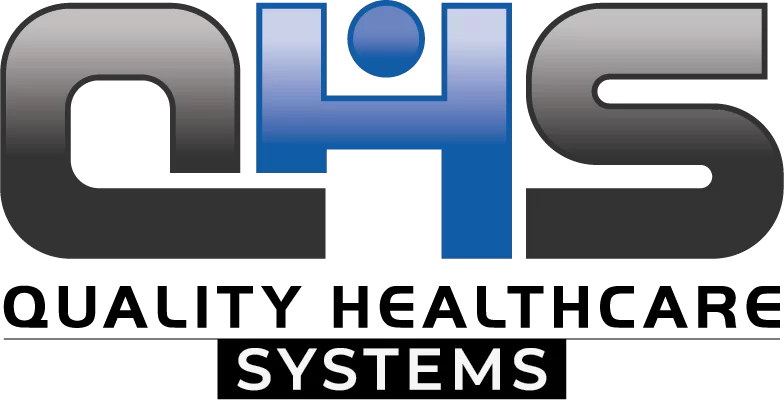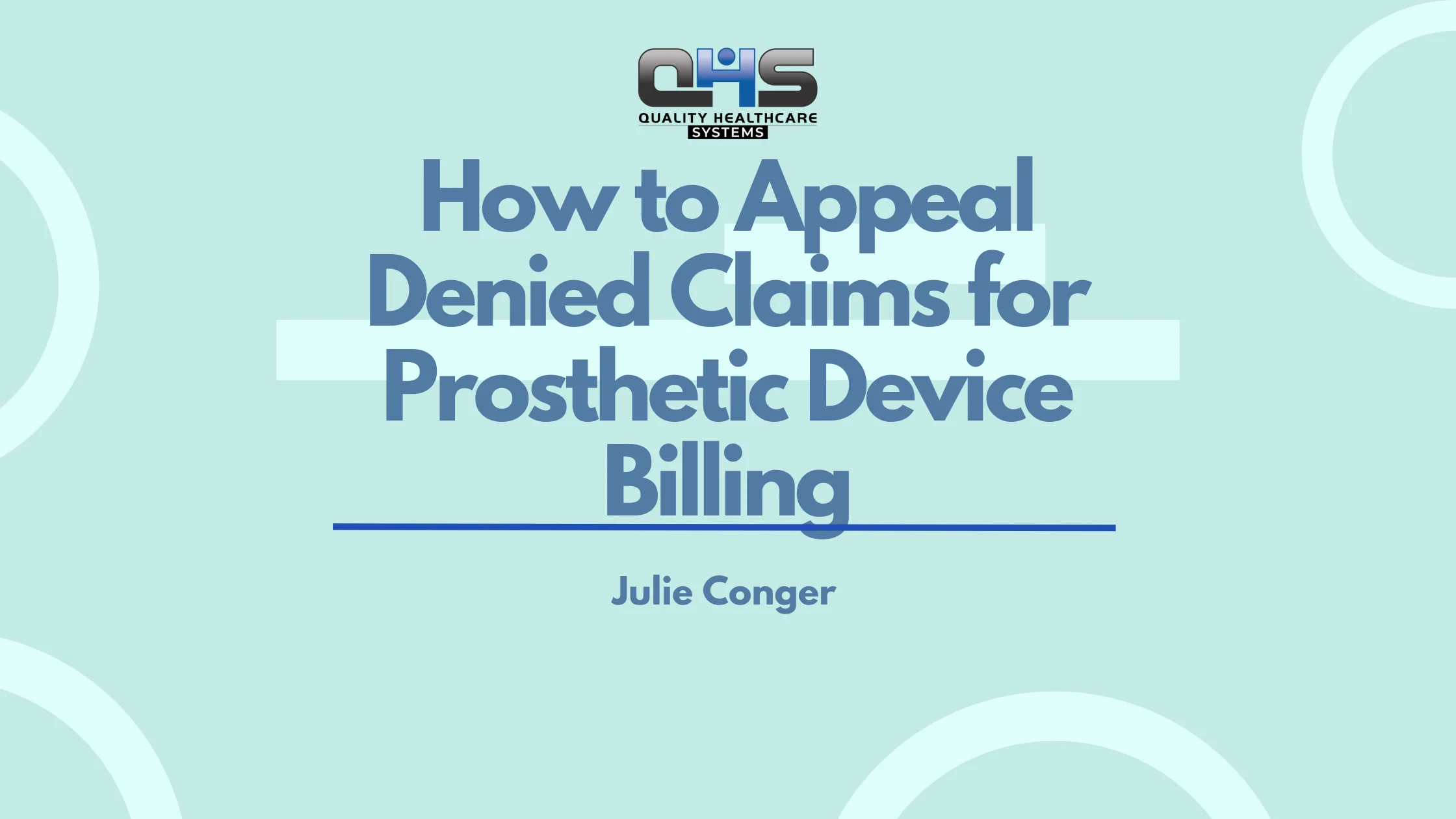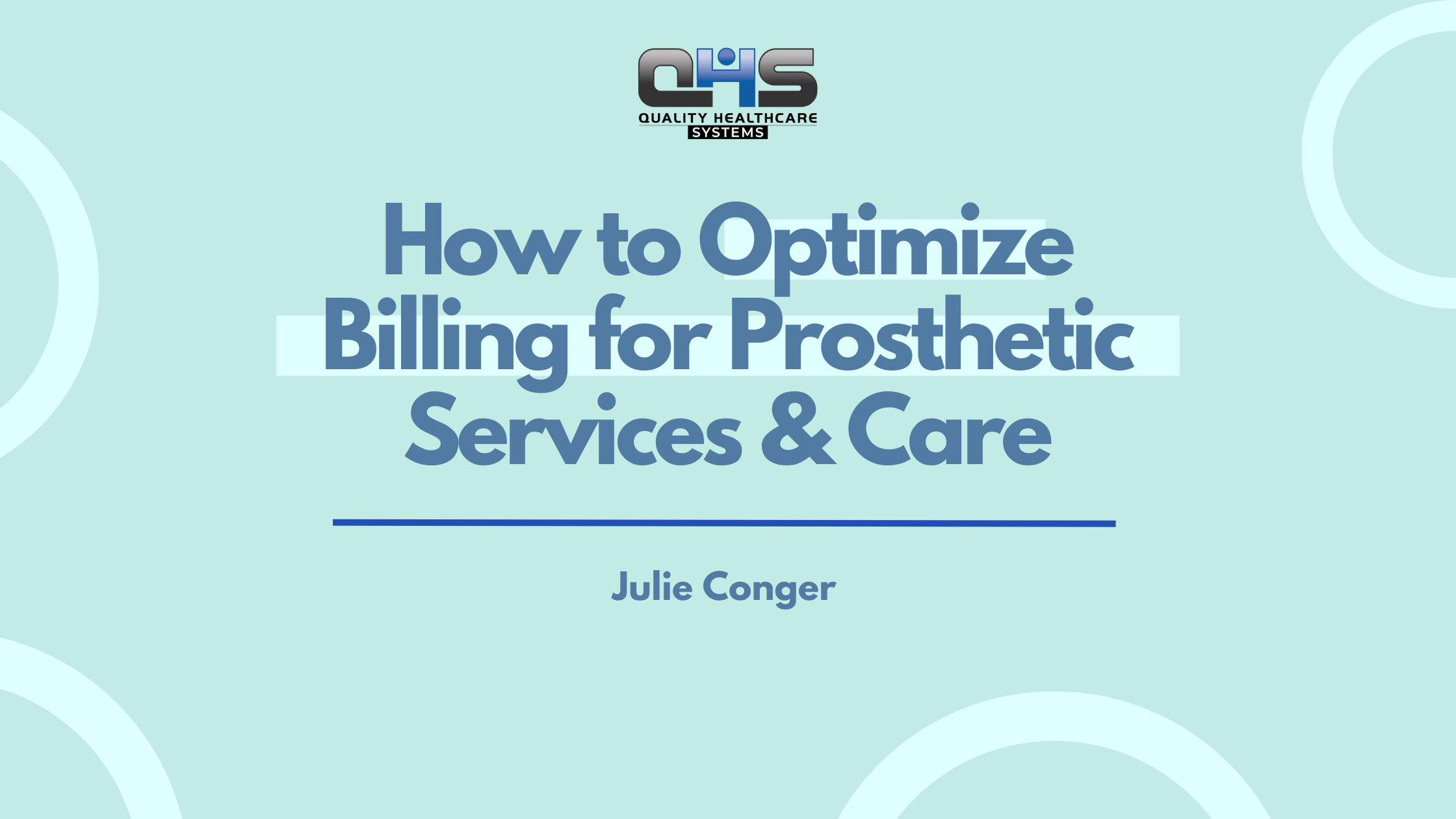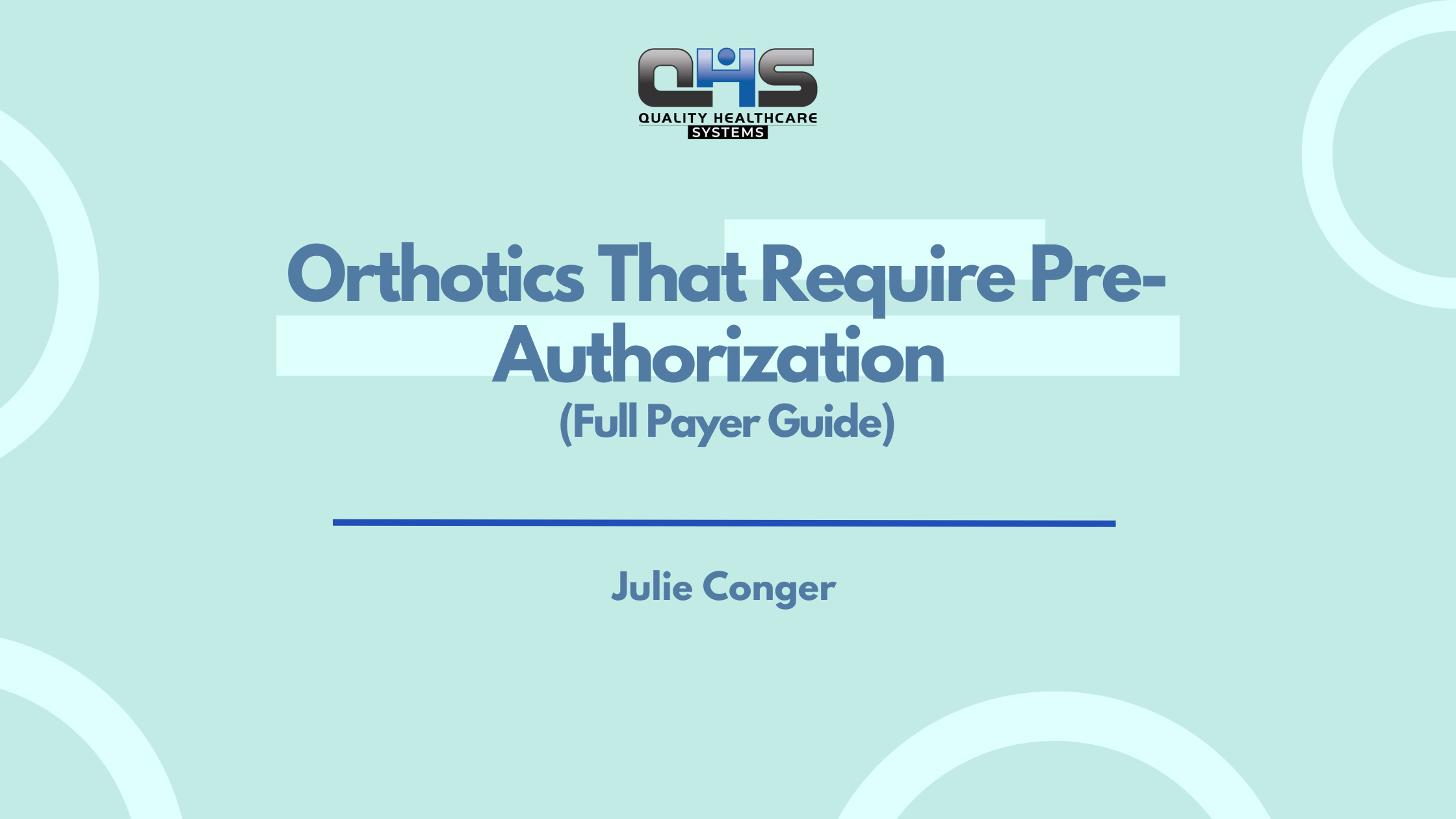A denied insurance claim for a prosthetic limb can be frustrating and stressful. Whether you’re a patient needing mobility or a prosthetist dealing with delayed payments, a rejection creates unnecessary hurdles.
The first step is understanding why the claim was denied. Even minor errors or missing documentation can lead to rejections. Once you identify the reason, you can build a strong appeal to get the coverage you deserve.
This guide breaks down the appeal process, helping you navigate insurance requirements and improve your chances of approval.
How to Appeal a Denied Insurance Claim for Prosthetics
Successfully appealing a denied claim requires a methodical approach, backed by strong documentation and adherence to payer guidelines. Following these steps can significantly increase the likelihood of claim approval.
Step 1: Review the EOB or Remittance Advice
Each denial is accompanied by an EOB or remittance advice detailing the reason for rejection. Carefully analyze the denial codes and insurance policies to determine the best course of action.
Step 2: Gather Comprehensive Supporting Documentation
A successful appeal requires robust supporting documents, including:
- Physician’s Detailed Notes: Documentation should include the patient’s medical history, mobility limitations, and justification for the prosthetic device.
- Functional Level Assessment (K-Level Classification): For Medicare claims, the K-Level assessment determines the necessity of specific prosthetic components.
- Detailed Supplier Records: Provide proof of delivery, device specifications, and prior authorization records (if applicable).
Step 3: Draft a Well-Structured Appeal Letter
A formal appeal letter should include:
- Patient’s details (name, policy number, claim number)
- A clear reference to the denied claim
- A factual argument supporting medical necessity
- Attached supporting documents (e.g., prescriptions, progress notes, prior authorizations)
- Request for reconsideration with a deadline for response
Pro Tip: Working with an experienced medical billing service like Quality Healthcare Systems (QHS) can streamline the appeals process by ensuring all documentation aligns with payer requirements.
Step 4: Submit the Appeal Within the Payer’s Deadline
Different insurance companies and Medicare have varying deadlines for appeals. Most private insurers require appeals within 30-60 days, while Medicare allows up to 120 days. Late submissions are automatically rejected.
Step 5: Follow Up and Track Appeal Progress
Regularly contact the insurance company to check the status of the appeal. If additional documentation is requested, submit it promptly to prevent further delays.
Step 6: Escalate if Necessary
If the first-level appeal is denied, escalate to a higher level, such as a reconsideration request or an independent review board (for Medicare Advantage claims). Legal representation may be needed for complex cases
What are the Common Reasons for Prosthetic Billing Denials
Before initiating an appeal, identifying the root cause of a claim denial is crucial. The most frequent reasons include:
- Insufficient Medical Necessity Documentation: Payers often reject claims when they lack supporting documentation from physicians, such as progress notes, functional assessments, or prescription details.
- Incorrect or Missing HCPCS Codes: Prosthetic devices require accurate Healthcare Common Procedure Coding System (HCPCS) codes. Coding errors or omissions can lead to automatic denials.
- Prior Authorization Issues: Many insurance companies and Medicare plans mandate prior authorization for prosthetic devices. Failure to obtain approval beforehand results in claim rejection.
- Medicare’s Same or Similar Rule: Medicare denies claims if a beneficiary has already received a similar prosthetic device within a certain timeframe, unless proper justification is provided.
- Non-Covered Services or Policy Limitations: Certain private insurers and Medicare plans exclude specific prosthetic components from coverage or impose frequency limitations.
Reasons for Denial & Corrective Actions
| Denial Reason | Explanation | Corrective Action |
|---|---|---|
| Insufficient Documentation | Missing physician notes, medical necessity proof | Obtain detailed medical necessity documentation from providers |
| Incorrect HCPCS Code | Wrong or missing prosthetic billing codes | Verify coding accuracy using official guidelines |
| No Prior Authorization | Required authorization not obtained | Confirm payer requirements before claim submission |
| Medicare ‘Same or Similar’ Rule | Patient received a similar device recently | Submit additional medical justification and patient history |
| Non-Covered Services | Payer policy excludes certain prosthetic components | Check payer policy before prescribing the device |
How Can You Streamline Prosthetic Billing to Reduce Claim Denials?
Preventing denials starts with a proactive approach to billing accuracy and compliance. By implementing best practices, prosthetists can reduce rejection rates and streamline reimbursements.
Leverage Expert Medical Billing Services
Outsourcing prosthetic billing to a specialized service like QHS minimizes errors, improves claim approvals, and ensures compliance with insurance regulations. Professional billing services handle prior authorizations, coding accuracy, and appeals, allowing prosthetists to focus on patient care.
Verify Insurance Coverage Before Submission
Conduct a thorough insurance eligibility check to confirm coverage limitations, frequency restrictions, and prior authorization requirements.
Ensure Proper Documentation From the Start
Establish a standardized process for obtaining and submitting detailed medical necessity documentation, avoiding last-minute rejections.
Use Advanced Billing Software
AI-driven billing solutions reduce coding errors, flag missing information, and automate appeal tracking, improving overall efficiency.
What to Do If Your Prosthetic Limb Appeal Is Denied
A denied insurance appeal can be frustrating, but it doesn’t mean you’re out of options. Many people have successfully obtained prosthetic limb coverage after multiple attempts, while others have found alternative funding sources.
1. Understand the Denial
Begin by thoroughly reviewing the denial letter from your insurance company to comprehend the specific reasons for the denial. Common reasons include claims that a service isn’t covered, is deemed medically unnecessary, or results from logistical errors.
2. Initiate an Internal Appeal
Contact your insurance provider’s customer service to discuss the denial and gather information on the appeals process. Submitting a formal appeal often involves providing additional documentation from your healthcare provider to support the medical necessity of the prosthetic limb.
3. Seek an External Review
If your internal appeal is unsuccessful, you have the right to request an external review by an independent third party. This process varies by state but is designed to ensure that insurance companies adhere to fair practices.
For instance, Pennsylvania has a program managed by the Pennsylvania Insurance Department that processed over 500 appeal requests in 2023, overturning about half of the denials.
4. Explore Government Assistance Programs
Investigate federal and state programs that provide financial assistance for prosthetic devices. Medicare, Medicaid, and the Department of Veterans Affairs (VA) offer coverage for prosthetic limbs, depending on eligibility.
5. Utilize Crowdfunding and Community Support
If other options are exhausted, consider launching a crowdfunding campaign on platforms like GoFundMe to raise funds for your prosthetic limb. Sharing your story on social media can amplify your reach and garner support from friends, family, and the broader community.
For example, a Utah family successfully raised funds through GoFundMe to cover the cost of a bionic prosthetic arm for their daughter after insurance deemed it not “medically necessary.
Frequently Asked Questions
How long does a prosthetic device appeal take?
Appeals typically take 30 to 90 days, depending on the insurance provider. Medicare appeals may take longer due to multi-level reviews.
Can I resubmit a prosthetic claim without an appeal?
Yes, if the denial was due to missing information or minor errors, a corrected claim can be resubmitted without initiating a formal appeal.
What should be included in a prosthetic claim appeal?
A strong appeal includes medical necessity documentation, a physician’s statement, coding corrections, prior authorization proof, and a detailed appeal letter.
What is the success rate of appealing denied prosthetic claims?
With proper documentation and professional billing support, the success rate for overturned denials can be 60-80%, depending on the payer.
How can QHS help with prosthetic claim appeals?
QHS specializes in prosthetic billing, handling documentation, prior authorizations, and appeals to ensure higher claim acceptance rates and reduced reimbursement delays.
Final Thoughts
Appealing denied prosthetic device claims requires a thorough understanding of payer policies, precise documentation, and persistence. Partnering with a trusted medical billing service provider like QHS can significantly improve approval rates, ensuring seamless reimbursement and financial stability for prosthetic suppliers.






